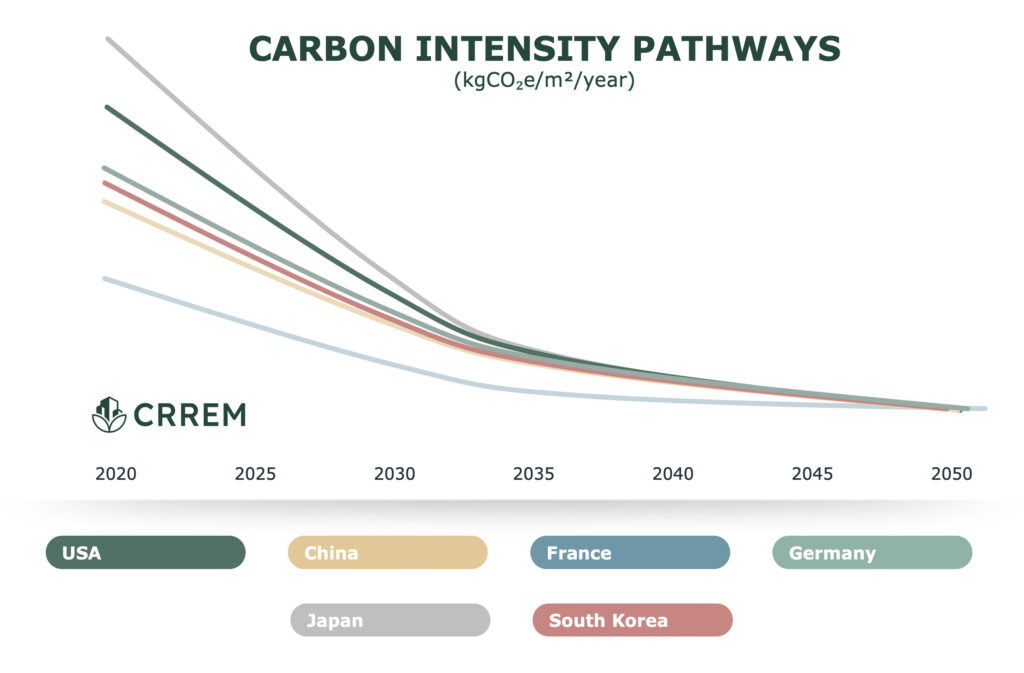CRREM’s science-based decarbonization pathways reflect the emissions and energy intensity levels buildings must meet to stay aligned with a 1.5°C warming scenario. The CRREM Pathways cover a wide range of property types across 44 countries, and are publicly available for open-access use.
By comparing building performance against the CRREM Pathways, property owners and investors can take early action to avoid transition risk, by staying ahead of tightening regulations and more demanding market expectations. The CRREM Pathways enable clearer decision-making, more targeted capital planning, and greater accountability for transition risk management in real estate.
Core principles of the CRREM Pathways

Free from commercial or political influences

Ensuring public, non-commercial access to decarbonization pathways

Addressing the needs of diverse real estate portfolios worldwide

Maintaining the highest standards in methodology and data
CRREM’s Risk Assessment tool helps real estate stakeholders assess if a building is aligned with a 1.5°C decarbonization pathway. Further, many third-party data platforms and service providers have incorporated the pathways into their analytics and advisory services.
* Image is for illustrative purposes only
Pathways are developed using a globally standardized method that provides a science-based approach for translating global climate targets into actionable decarbonization pathways for real estate.
